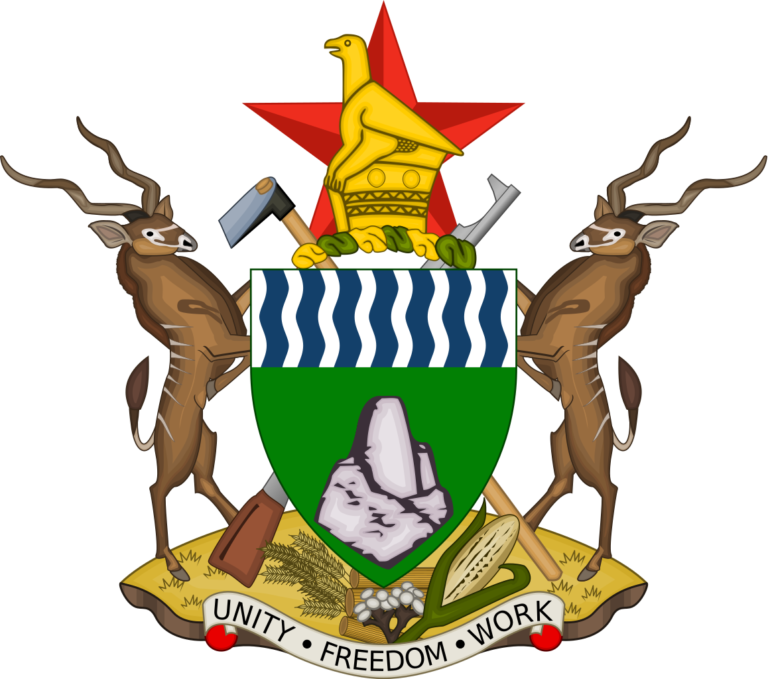Food production and processing in developing countries like Zimbabwe generate high levels of waste and by-products, which can cause environmental problems and economic loses if not utilised effectively.
For innovative entrepreneurs, these by-products and waste from food production can be turned into export ready products, earning them the much-needed foreign currency.
This can contribute to the reduction in waste accumulation and result in significant financial benefits.
In most cases, these biomaterials have ample potential for generating food additives which in turn will improve quality and taste as well as maximising on exports in Zimbabwe where it is produced.
Many of these by-products, especially from agro-based processing, are a source of valuable compounds such as proteins, lipids, starch, and dietary fibres.
The main raw materials used in the processed food industries in developing countries are fruits, vegetables, dairy products, and fish.
Fruits like mango, pineapple, banana, grape, and citrus are crucial raw materials sought after by food processors in Zimbabwe.
However, in most cases, they are left with huge quantities of by-products such as molasses, shells, bagasse, fruit peels, trimmings, stems, bran, and seeds, which could be a game changer for innovative businesses that can turn them into marketable products.
Food wastes are also generated by, for example, damage during transportation to the local and export markets, and through storage and processing.
For some retailers, damaged agricultural produces do not sale better, hence they are sometimes returned to a supplier or sold at a lesser cost.
What is required in some instances is for entrepreneurs to group themselves, use the knowledge they have acquired from learning institutions and value-add the less desirable by-products and food wastes into exportable finished products.
In most cases, the size and type of equipment required to turn some of the food waste and by-products into marketable products is within the levels that are affordable to most aspiring entrepreneurs.
In many countries, processing of vegetables and fruits produces raw materials that should be easily accessible to entrepreneurs, considering that large manufacturers already face a challenge of discarding such food waste as per statutory guidelines.
The processing of by-products generated in Zimbabwe, for the formulation of novel foods will directly contribute to job creation and the participation of entrepreneurs in regional and international markets.
Along the chain, value addition of food wastes can also benefit exports development, food processing and packaging industries.
The experience of Europe shows that although there is legislation aimed at promoting the use of waste in the production of biofuels, processing of food wastes and by-products as raw materials or food additives, could generate economic gains for the export industry in Zimbabwe.
Mangoes
Mangoes are grown naturally in Zimbabwe and cultivated in tropical and subtropical regions.
In a mango processing plant, the by-products especially seeds and peels are considered cheap source of valuable food and nutraceutical ingredients.
These are however usually put to waste as their value-addition may not be worthwhile for bigger corporations.
For small-sized businesses, these could be value added into, for example, seed flour that is fast becoming popular among those looking for foods with lower cholesterol levels.
A research by done by Yatnatti, Vijayalakshmi and Chandru in 2014 revealed that mango kernel flour is a good source of protein, fat and energy.
The flour also contains appreciable levels of calcium, magnesium, and potassium, which are important macro minerals required for vital functions of the body.
A research done by the Mexican Council for Science and Technology (CONACYT) on the nutritional and functional potential of mango reported that mango seed flour has a potential use in food preparation in households, restaurants and hotels, and may also be used for infant formulas that is suitable for exporting.
Currently, top markets for mango seed flour include France, Germany, Canada, and United Kingdom.
According to Export Potential Map, the markets with greatest potential for Zimbabwe’s exports of mango flour are South Africa, United States of America and Germany
CONACYT also reported that this is a process that have already been adopted in Nigeria.
In Nigeria, for example, the use of mango by-products has been suggested as the main ingredient in specific products of infants and adults since it increases the content of protein and antioxidants.
As the rainy season approaches, Zimbabwe will have abundant mangoes and the seed should not go to waste, but rather processed into value-added products for local and international markets.
Pineapple
Zimbabwe’s production of pineapples is expected to grow in the coming years as more smallholder farmers in areas such as Chimanimani and Chipinge are participating in capacity development activities organised by ZimTrade and its partners, including Netherlands-based PUM.
As production grows, it is projected that value-addition of pineapples will also grow, with manufacturers concentrating more on extracting juice, canning and drying.
During processing, large amounts of by-products, consisting mainly of peel, stem and pomace are generated, representing approximately 30-35 percent of the pineapple fruit, which is usually discarded as low value.
Pineapple stem is an agricultural waste with high potential as an alternative source of starch.
The extracted starch has distinctly unique properties, compared to commercial rice, corn, and cassava starches.
Banana
Banana is a fruit that is widely grown around the world. Bananas are cultivated in over 130 countries including Zimbabwe.
Bananas are consumed all over the world, mainly because of its low price and the fact that it can be harvested almost the entire year.
The large amount of agro-industrial waste such as banana peel is mostly used for industrial processes to produce new products such as fertilizers, chips, dried pulps, jams, wine, beer, and sauces.
Banana peels can be used as feed for cattle and poultry, as fertilizer, to produce ethanol and biogas, for extraction of banana oil as absorbent for heavy metal removal in water purification systems as well as to produce proteins.
With availability of specialised equipment and necessary skills, extraction of oils could be a project that small businesses should consider.
Plant-based fertilisers are gaining popularity among farmers around the world as more people are switching over to organic food and paying attention to how their food is grown.
Research centres of Nanotechnology biologists have found that banana peels can be used as a feedstock to make Nano fertilizer.
The discovery may result in a commercial use for the hundreds of thousands of tons of banana skins that are discarded as waste.
A research by Wilaipon (2007) also revealed “that low cost banana peels bound with molasses under high press pressure are a potential raw material for making banana briquettes.”
These briquettes were made as an attempt to utilize agricultural waste such as the banana peel as a substitute for solid fossil fuels such as coals.
Comparing to other agricultural waste briquettes such as sawdust, the study by Wilaipon noted that “briquettes made from banana peels had an outstandingly lower burning rate with equivalent briquette strength even when similar densification pressure is applied during processing.”
Citrus Fruits
Citrus fruits are a family of widely consumed fruits worldwide. Global imports of citrus stood at US$15.1 billion.
Approximately one-third of citrus fruits are used to produce fresh juice or drinks.
A small percentage of this waste is being recycled to obtain essential oils which can be used in the cosmetic, food and pharmaceutical industries.
Buttermilk, skimmed milk, and whey
In Zimbabwe, within the dairy industry, cheese is one of the primary products, which uses milk in its preparation.
The main by-product of the dairy industry is the buttermilk used in the preparation of cheese.
These proteins can be used for human consumption, like in the manufacture of whey-based beverages.
The spectrum of confirmed benefits and the potential of whey protein for health ranges from infant nutrition using the purified protein in infant formulas to the elderly nutrition.
Some dairy companies in Zimbabwe have already started producing nutritional dairy beverages using skimmed milk.
Apparently, when food is processed using such by-products and wastes, some positive improvements are achieved.
The increase in shelf life and the improvement in quality of food by the development of pleasant textures and aromas are also positive changes brought by processing food wastes and by-products.
Having identified some of the opportunities in food by-products and food wastes, ZimTrade – the national trade development and promotion organisation is ready to assist youths to identify export markets for these products.



